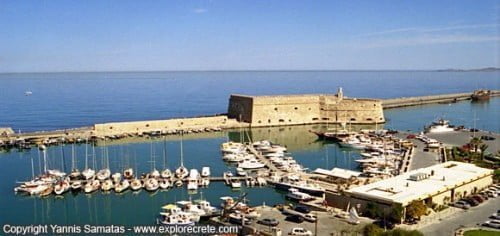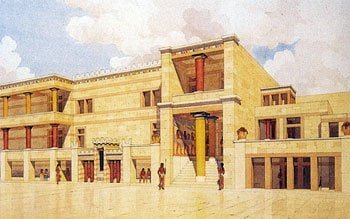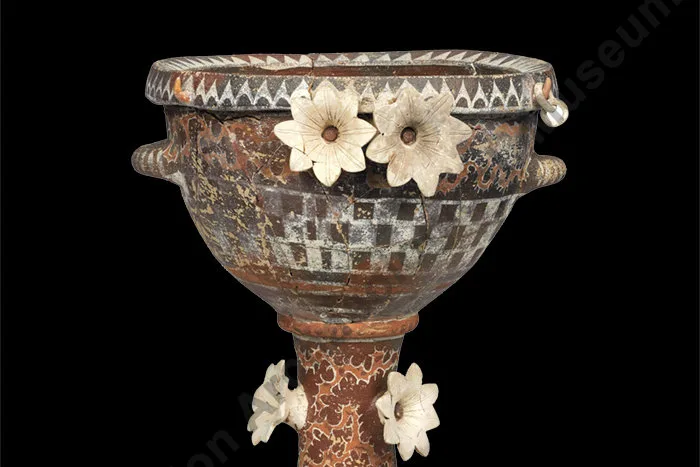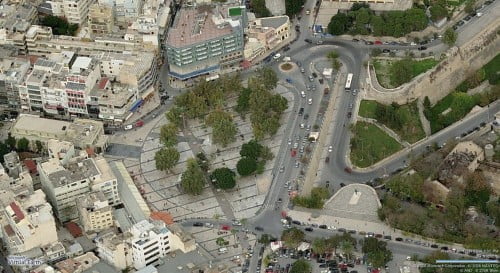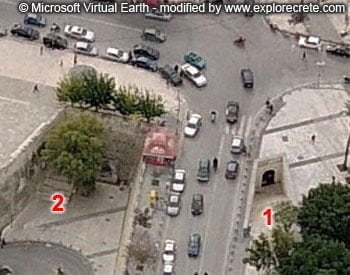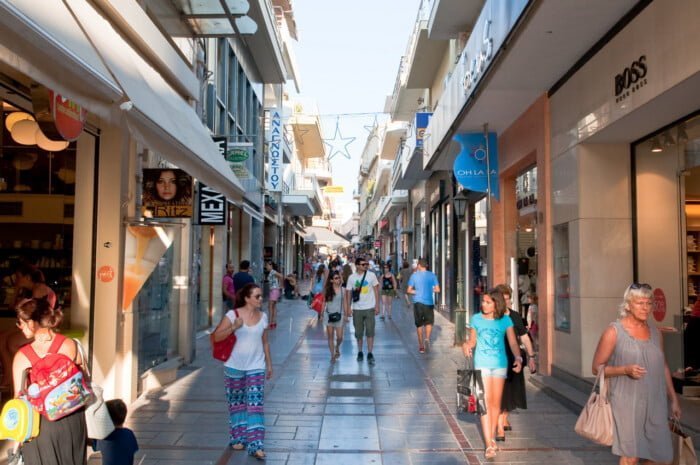Heraklion today, current problems and Heraklion in the future
Heraklion today
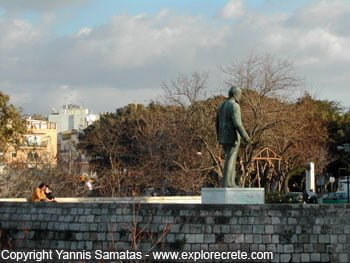 Heraklion is my town, the place where I was born and where I have lived most of my life. I love Heraklion because this is where I took my first steps, went to school, fell in love for the first time and because this is where my friends and family live. Heraklion is a vibrant city, busy in both winter and summer; it is the largest city in Crete and everybody passes through here sooner or later for business, shopping or fun.
Heraklion is my town, the place where I was born and where I have lived most of my life. I love Heraklion because this is where I took my first steps, went to school, fell in love for the first time and because this is where my friends and family live. Heraklion is a vibrant city, busy in both winter and summer; it is the largest city in Crete and everybody passes through here sooner or later for business, shopping or fun.
Like every big city (by Cretan standards), Heraklion has its problems: the main ones are the traffic situation with ever-increasing numbers of cars flooding the streets, and continuous urban sprawl with no real planning.
Today driving around Heraklion is a real trial at peak times or when the first drops of rain start to fall. Everybody tries to get round by car, forming huge tailbacks that crawl along at a snail’s pace. On occasion it’s taken me 40 minutes to drive a distance I could easily have walked in quarter of an hour. This kind of situation makes me look back longingly on the ease and enjoyment of travelling by bike, something I experienced when living in Holland for a year. I wish the plans for cycle paths in Cretan cities, promised in pre-election periods, would materialize soon so we can enjoy our town without the aggravation of traffic jams.
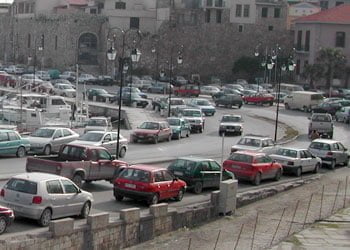 Twenty years ago, we could park our cars anywhere in Heraklion with no trouble. Today the lack of parking spaces has become a massive problem and even the most law-abiding residents have to break the law. No-parking signs lose all meaning when they are placed in unnecessary spots, so they are ignored on a daily basis, usually with the authorities turning a blind eye. What can the unfortunate driver do when in many areas there is no legal parking space within reasonable distance?
Twenty years ago, we could park our cars anywhere in Heraklion with no trouble. Today the lack of parking spaces has become a massive problem and even the most law-abiding residents have to break the law. No-parking signs lose all meaning when they are placed in unnecessary spots, so they are ignored on a daily basis, usually with the authorities turning a blind eye. What can the unfortunate driver do when in many areas there is no legal parking space within reasonable distance?
These are problems typical of a rapidly-developing city with a constantly-increasing population. Heraklion has indeed grown quickly over the past decades and is spreading into every available neighbouring area. But this expansion is not controlled by comprehensive urban planning with an eye to the future. Legal or illegal houses are built first, and the state follows many years later in a belated attempt to impose a town plan. It’s too late, as the new area has already been built up with no consideration for roads or parks. As a result, Heraklion is one of the cities with the fewest green spaces and parks in Greece. Even the sea breeze which has cooled Crete for centuries is now unable to breathe life into our concrete city, which swelters in the heat every summer.
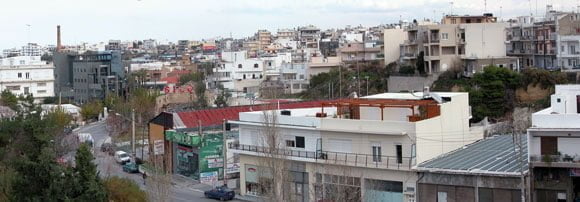
Another problem, that has arisen following Greece’s entry into the Euro, is the high prices we Herakliots pay, especially for leisure activities. The papers have said that a coffee costs more in Heraklion than in most European capitals. I haven’t travelled in enough countries to confirm this, but recently I was in Mires (50 km south of Heraklion, near Phaistos) and had coffee with a group of friends in a café in the centre of town. When I asked for the bill I thought there’d been a mistake: it was just 6 euros for a coffee, a tea, an orange juice and a toastie. In Heraklion town centre we would have paid about 15 euros, i.e. 150% more. On another occasion, I paid 31 euros for two drinks and two glasses of wine in a Heraklion bar! This may not seem much in euros, but if translated into drachmas it’s over 10,000 drs, an exorbitant price, especially if you consider that it’s more than a day’s salary for many people.
Heraklion Changes

But enough of the moaning. This article isn’t intended to paint Heraklion in the blackest colours, but to give as objective a picture as possible. By general admission, Heraklion has improved in recent years with a series of new projects, mainly new roads to ease the traffic situation. The roadworks to upgrade the coastal road and Heraklion town centre are in progress. The 25th of August Street and other smaller streets in the centre have already been pedestrianized, while there are ongoing efforts to conserve and promote the Venetian walls and restore the Venetian fortress of Koules. We also finally have a rubbish recycling programme in various neighbourhoods. We Herakliots are glad to see an active municipal authority at last, implementing essential projects – projects which should have been realized decades ago. The fact that the Mayor of Heraklion won a second term of office with 73% of the vote in the municipal elections shows that the works in progress have made a positive impression on Heraklion citizens. Today it is obvious that Heraklion remains the centre of commercial and economic life in Crete, while it also boasts the largest and best-equipped hospitals on the island, an internationally-acclaimed university and the largest port and airport.
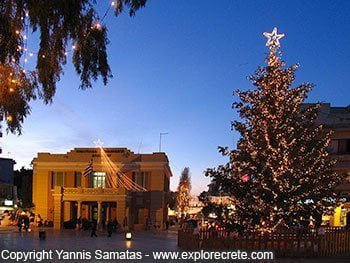 If you’re visiting Crete, it’s worth spending at least a few hours in Heraklion. Heraklion has the largest museum of Minoan artefacts and a wonderful Historical Museum. It is surrounded by impressive star-shaped Venetian walls and its streets are full of monuments to its long and fascinating history.
If you’re visiting Crete, it’s worth spending at least a few hours in Heraklion. Heraklion has the largest museum of Minoan artefacts and a wonderful Historical Museum. It is surrounded by impressive star-shaped Venetian walls and its streets are full of monuments to its long and fascinating history.
If you want to see how the people of Heraklion live and enjoy themselves, stroll through the Lion Square and Eleftherias Square, and along the market street, Dikeosinis Avenue and the pedestrian Korais and Milatou Streets, lined with dozens of cafeterias. This is the heart of Heraklion, beating 24 hours a day and always busy at any time of the day or night.
Leave the main streets for a while and explore the alleys in the town centre. It’s even better if you’ve got a local friend to guide you and give you first-hand information. Visit the ouzeris in Agios Dimitrios Square, try food cooked over a wood fire in the square of the Historical Museum, explore the little tavernas in the alleyways of the main market in 1866 Street.
If you happen to be in Heraklion in July and August, ask about the programme of cultural events laid on by Heraklion Municipality. There’s a different play or concert by Cretan, Greek or foreign artists almost every day.
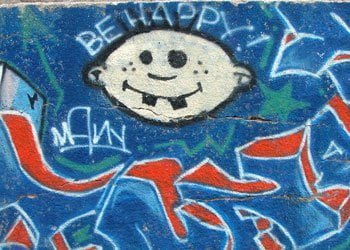 Heraklion is not the most beautiful town in Crete because much has been sacrificed on the altar of so-called progress. After each dark period of occupation, the people of Heraklion generally tried to remove all traces of it and move on. Unfortunately, that was when many of the monuments whose loss we now regret were destroyed. Without relaxing our vigilance, let us hope, now that the wounds of the past have healed and more and more people are arguing for the need to retain our ties with the past through monument restoration and promotion, that, with better urban planning based on citizens’ quality of life, Heraklion will recover from past mistakes and become more beautiful, cleaner, greener and friendlier to its people. Then it can continue to bear the name of “Megalo Kastro”, the Great Castle we are so proud of.
Heraklion is not the most beautiful town in Crete because much has been sacrificed on the altar of so-called progress. After each dark period of occupation, the people of Heraklion generally tried to remove all traces of it and move on. Unfortunately, that was when many of the monuments whose loss we now regret were destroyed. Without relaxing our vigilance, let us hope, now that the wounds of the past have healed and more and more people are arguing for the need to retain our ties with the past through monument restoration and promotion, that, with better urban planning based on citizens’ quality of life, Heraklion will recover from past mistakes and become more beautiful, cleaner, greener and friendlier to its people. Then it can continue to bear the name of “Megalo Kastro”, the Great Castle we are so proud of.
Heraklion in the future – Announcement by the Mayor of Heraklion
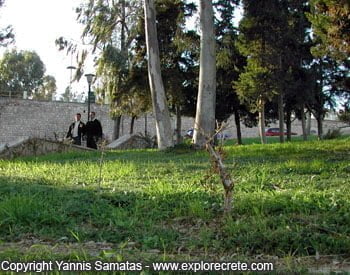 Mayor Yannis Kourakis aspires to turn Heraklion into a model environmental city by Greek standards in five years, via the “Green Heraklion 2008-2013” initiative. As he stresses, “Our aim is for the city to have a different face in 2013, much greener, more human, more attractive to us all; for it to be a model city for its environmental action in Greece, and one of the most environmentally-friendly cities in Europe by 2020.”
Mayor Yannis Kourakis aspires to turn Heraklion into a model environmental city by Greek standards in five years, via the “Green Heraklion 2008-2013” initiative. As he stresses, “Our aim is for the city to have a different face in 2013, much greener, more human, more attractive to us all; for it to be a model city for its environmental action in Greece, and one of the most environmentally-friendly cities in Europe by 2020.”
The “Green Heraklion 2008-2013” initiative is probably the first integrated environmental programme in Greece. It comprises nearly all the activities intended to contribute to the city’s ecological footprint. Its implementation will give rise to a radically improved quality of life in Heraklion, as regards not only the environment but also citizens’ daily lives.
The Mayor’s proposals (planting tens of thousands of trees, full implementation of the city plan, handing over all free spaces to the citizens, epropriation of land for green parks, incentives for planting rooftops, solving the problems of water scarcity and the traffic situation, recycling, etc.) will be presented for public debate with social agencies over two months. The proposals will be settled at an open meeting before the final decision of the municipal council.
* Article by Yannis Samatas
© explorecrete.com All Rights Reserved. Reproduction or copying without permission is prohibited.

